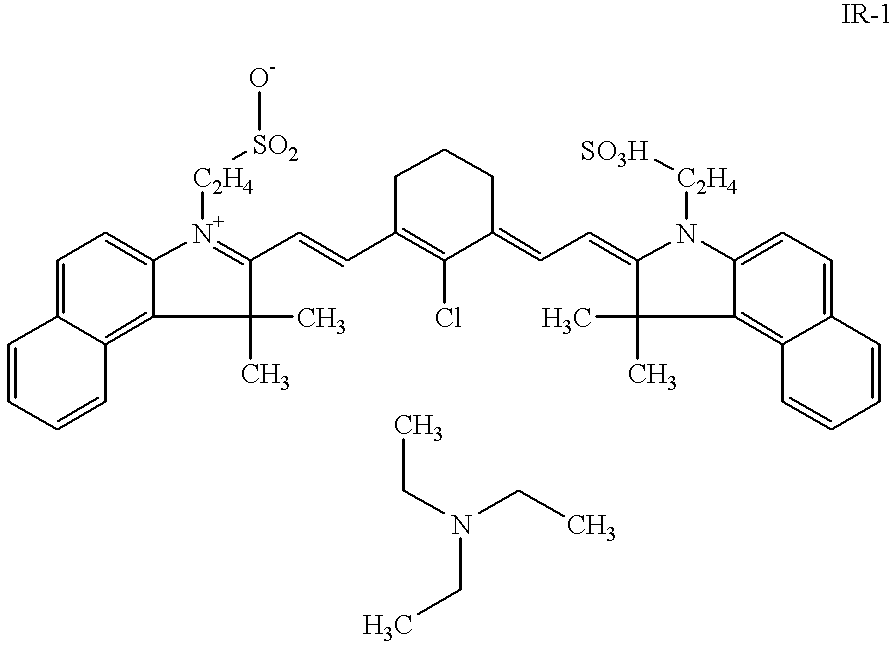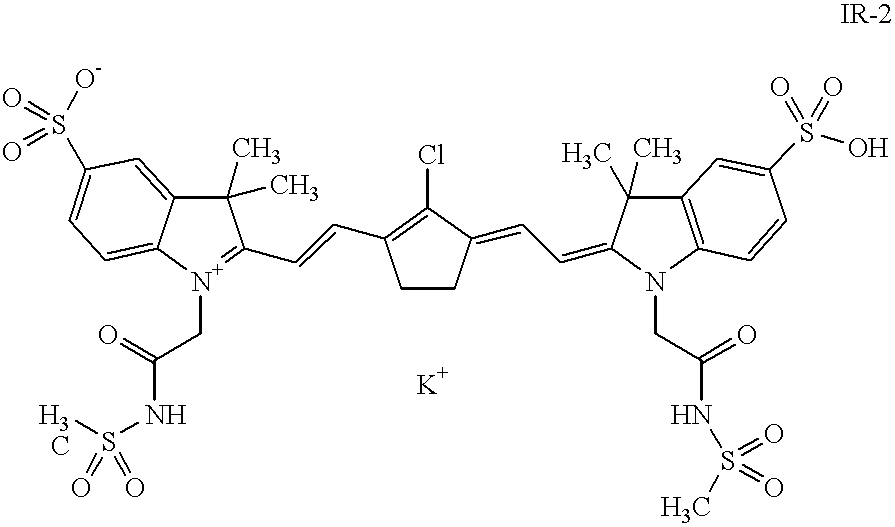Heat sensitive imaging element for providing a lithographic printing plate
a technology of ablative imaging and lithographic printing plate, which is applied in the direction of photosensitive materials, auxiliaries/base layers of photosensitive materials, instruments, etc., can solve the problems of cumbersome and laborious work, photosensitive coatings are not sensitive enough to be directly exposed to lasers, etc., and achieve the effect of sufficient mechanical strength
- Summary
- Abstract
- Description
- Claims
- Application Information
AI Technical Summary
Benefits of technology
Problems solved by technology
Method used
Image
Examples
Embodiment Construction
Preparation of the ablative hydrophilic layer.
To a polyethylene coated paper support, coated with a primer containing a latex of copoly(vinylidenechloride / methylmethacrylate / itaconic acid) and silica and coated with a second subbing layer containing gelatin and silica, following coating solution was coated at a wet coverage of 30 g / m.sup.2, dried at 40.degree. C. and subsequently hardened by subjecting it to a temperature of 67.degree. C. at 50% RH for 12 hrs. Coating solution.
To 50 g of a dispersion containing 30% KIESELSOL 300F.TM. (trade name of Bayer for a silica) were subsequently added, while stirring, 138 g of deionized water, 540 g of a 1% solution of an IR-absorber (as described in table 1) 108 g of a 5% solution of a hydrophilic binder (as described in table 1) and 152 g of a hydrolyzed 22% tetramethyl orthosilicate emulsion in water. The pH was adjusted to pH=4. Tho this mixture was then added 12 g of a mixture of two wetting agents.
CARBOPOL 801 is a trade name of Goodric...
PUM
| Property | Measurement | Unit |
|---|---|---|
| thickness | aaaaa | aaaaa |
| thickness | aaaaa | aaaaa |
| thickness | aaaaa | aaaaa |
Abstract
Description
Claims
Application Information
 Login to View More
Login to View More - R&D
- Intellectual Property
- Life Sciences
- Materials
- Tech Scout
- Unparalleled Data Quality
- Higher Quality Content
- 60% Fewer Hallucinations
Browse by: Latest US Patents, China's latest patents, Technical Efficacy Thesaurus, Application Domain, Technology Topic, Popular Technical Reports.
© 2025 PatSnap. All rights reserved.Legal|Privacy policy|Modern Slavery Act Transparency Statement|Sitemap|About US| Contact US: help@patsnap.com


